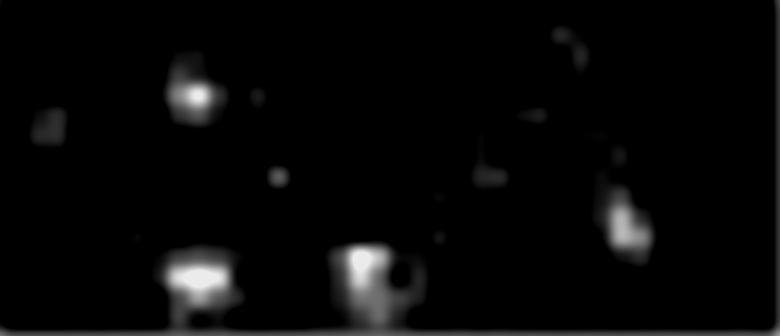A low-resolution thermal camera with competitive sensitivity (0.13 K NETD) at very low cost. Easily built from scratch—it requires no special parts, except a screen-printed sheet of pyroelectric PVDF polymer (as used in automatic porch lights) and a moulded polyethylene Fresnel lens. This camera achieves a cost reduction of 2 orders of magnitude ($10 vs $1000) over the next cheapest, which is a 256-pixel PZT array from Irisys, while maintaining very good sensitivity. These are from a project called Footprints.
The design is simple: screen-printed carbon ink on a free-standing film of PVDF polymer, with a multiplexer made out of ordinary display LEDs with a few interesting optical and electronic hacks, as shown in these photos.

Mosaic image from 6 Footprints sensors, showing four people wandering underneath. Slightly smoothed to reduce the visual noise from all the little squares.
A fun war story from the September 2003 issue of Optics & Photonics News about the ups and downs of the Footprints project. (NB the war story link is free; the OPN one requires a log-in.)
The gory technical details: A $10 Thermal Infrared Imager
(Proc. SPIE 4563, 2001, p. 42-51).
We got a bunch of positive press reactions to this, including the NY Times and the Discovery Channel. We got a few negative ones too, but overall the fact that 30 cm pixel size makes everybody anonymous reassured people. (Nowadays, of course, video surveillance is ubiquitous, but back in 2000 privacy still existed.)
(NB: there aren't too many pixels, so you have to resize the video player to see much!)
IR video of customer demonstration, IBM Industry Solutions Laboratory, showing a bunch of folks standing around looking at this same (live) IR footage of themselves on monitors
2x3 mosaic, sensors 14 feet off the ground, suspended from a lighting boom at the Yorktown Stage
2x3 mosaic, sensors 10 feet off the ground, also at Yorktown Stage.
There are a few dead pixels, and the sensor in the bottom centre has a bad surface leakage problem, probably due to the very high humidity—data were taken during a thunderstorm.
Data were taken at 5 frames/s; the length scales are about 10 cm/pixel for the first, 30 cm/pixel for the second, one and 15 cm for the second.
(AVIs by courtesy of Sharathchandra Pankanti and Robert H. Wolfe.)